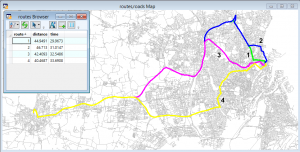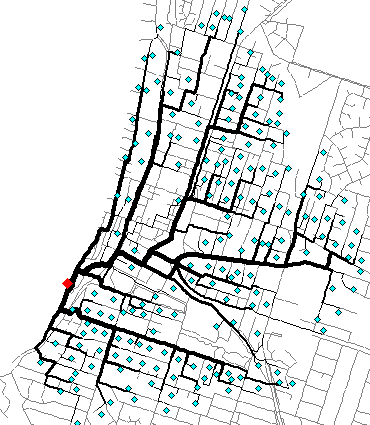Inspired by a recent post on MapInfo-L about the performance of a competing product, we decided to do a similar calculation with RW Net 4. Task is to create a distance matrix between 230,000 regions in the US. That is a very big calculation and just the output itself requires a lot of harddisk space. Even in a very compact format you would be looking at 200 GB (230,000^2 x 4 bytes).
We have free access to the TIGER database for the US and created random coordinates for the regions in order to have some input. First we imported the street network from MIF format. This took appr. 1 hour – not so bad. After all 4.7 GB of MIF file is a lot and the importer does more than just reading the file.
Next step was the actual calculations. We used the simple MatrixDynOut function in RW Net 4 with a smaller set of regions. After doing calculations for a while, we could extrapolate to the expected time for the full matrix: 60 days. A lot of time, but at least 8 times faster than the competing product, which had already spent appr. 15 months, divided between 5 computers, each working for 3 months. And still not finished……
There may of course be differences in hardware used, the street network and several other details unknown to us.




